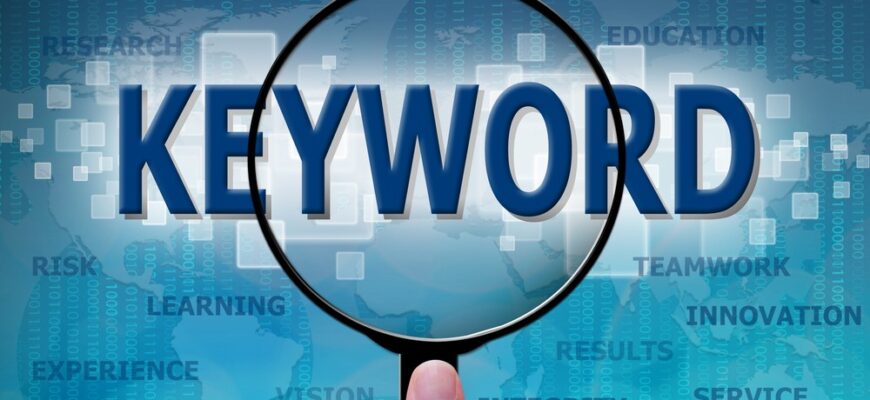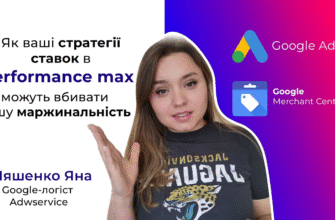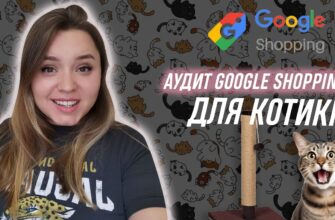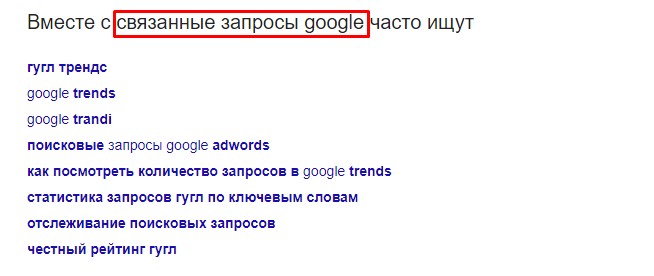- What are keywords and why are they needed in advertising?
- What is important to remember when selecting keywords for Google Ads?
- Basic tools for selecting keywords for contextual advertising
- Google Ads Keyword Planner
- Google Search Console
- Serpstat service
- Key Collector application
- Keyword Tool service
- Google Trends
- KWFinder
- Ubersuggest
- SERanking
- Ahrefs service
- Semrush platform
- Additional ways to collect semantics
- Why is it important to clean the semantic core after collecting queries?
The semantic core for contextual advertising can include hundreds or thousands of phrases, depending on the topic and budget of the campaign. At the same time, it is very important to choose the right keywords, because this directly affects the profitability of the campaign and its final conversion rate.
Fortunately, today there is a huge number of tools for keyword selection, among which there are both paid and free services. However, in this difficult business, do not rely only on robots and automated solutions.
They will help to collect relevant keywords, but still, without further processing and filtering semantics can not do without. In short, if you want the campaign to be effective and bring profit, without human participation to cope with this task will not work.
How many calls and sales will I get by ordering contextual advertising from you?
I need to calculate the conversion of my website Describe
the task
in the application
Calculate potential ad revenue Google
contextual advertising calculator
What are keywords and why are they needed in advertising?
Keywords are phrases that users type into the search bar when they are looking for an answer to their question on Google, Bing and other search engines. They should describe the content of your site as accurately as possible, so that the search engine can unmistakably determine its subject matter.
Imagine that the site – a book in a huge library called “Internet”. Keywords are the titles of chapters and sections in the book’s table of contents. The more precise and relevant titles you choose, the easier it will be for users to find your book among thousands of similar ones and get the information they need.
Therefore, the collection of semantic kernel, which consists of keywords – this is the foundation of the strategy for promotion in search engines. Keywords determine what queries the site will be shown at the top of the search engines. Therefore, it is really important to conduct a thorough analysis and select the most relevant and in-demand phrases in the context of a particular business.
At the same time, keyword phrases are important not only for SEO, but also when setting up contextual advertising. If the site is not optimized for a specific user query, you can attract targeted traffic by showing them ads for the right phrase.
The wider and more qualitative the semantic kernel is, the greater coverage of potential customers you will get. And the more relevant the selected keywords are, the higher will be the conversion of search traffic into purchases and applications.
What is important to remember when selecting keywords for Google Ads?
When selecting semantics for contextual advertising, take into account the following points:
- The main focus should be kept on transactional queries. Such phrases usually contain the words “buy”, “price”, “order”, “delivery”, etc. Traffic on them, as a rule, converts best of all, as people who search for them are already close to making a buying decision.
- Don’t trust automation. Special services that help in the selection of keywords for Google Ads are great helpers, but you should not rely on them completely. Be sure to review the resulting list manually and remove irrelevant phrases, because they will waste your budget and bring untargeted traffic to the site.
- First of all, include in the core queries for the most marginal goods and services. If you have a large online store with thousands of products, it is unlikely that you will be able to cover all categories in Google Ads, because clicks are quite expensive. Start by selecting keywords for the most profitable and important product groups. This will allow you to maximize the return on your marketing investment and not go into the “minus”.
- Do not forget about relevance. Queries must necessarily correspond to the content of the landing page to which the user will get to. If you are in the business of building turnkey bathhouses, generic queries like “bathhouse” or “sauna” will not work. People who are looking for them may just be planning a weekend trip to the bathhouse, or looking for a picture of a sauna as an illustration for a feature article. And you need exactly those who want to order construction.
- Do not ignore low-frequency keys and long phrases of several words. Most often, the more specific and detailed the user’s request – the higher his willingness to buy. Therefore, a well-crafted ad and the right landing page for such keys can give a very high conversion rate.
- Use synonyms and alternative wording. People can search for the same thing using different words and word combinations. It is necessary to take into account all possible variants of queries related to your business. The more complete your semantic core is, the more audience coverage you will get.
- A good semantic core is the basis, but not the only factor of success. The quality of landing pages, the right target audience, relevant ad texts, the use of add-ons, extensions and so on are all important. Only with comprehensive work on all aspects of the campaign can you see the maximum result.
Basic tools for selecting keywords for contextual advertising
Both Google’s built-in tool (the so-called keyword planner) and third-party tools can help you gather the most complete semantic core. Often, to achieve the best results, you need to combine several tools.
Google Ads Keyword Planner

One of the keyword selection tools in Google Ads is Keyword Planner. It helps to collect all possible keywords for ad impressions and provides statistics about the number of impressions per month, the level of competition, etc.
The tool is free of charge. To use it, you need to register in the Google Ads service. The planner collects and shows data on the number of clicks on target queries, can calculate the budget, guided by the assigned price per click and specified keywords.
Advantages of Keyword Planner:
- No payment required;
- Splits by region and city;
- Has a large database of user queries;
- Easily collect minus words;
- Splits by platform and location;
- If a keyword is used in a campaign, the tool will show detailed statistics on it (query dynamics, etc.);
- Queries can be downloaded in any format;
- At the stage of semantic kernel collection, it is possible to separate queries into separate groups.
Minuses:
- The service shows statistics not quite accurate, rounding up the figures;
- You can get more accurate data by launching an advertising campaign, but for this you will have to spend part of your budget.
Google Search Console
Few people know that Search Console can be successfully used to expand the semantic core when setting up contextual advertising. To do this, you can take data from the “Efficiency” section, where you can find complete statistics on those queries for which the resource is displayed in the output, even if it is not optimized for them specifically. This information is a real treasure trove of ideas for supplementing the list of keywords for contextual advertising.

How does it work? Let’s say you have an online store of sporting goods. You have already selected a certain pool of keywords, but you want to expand it. Go to Search Console, look at the statistics on queries and see that the site has shows for phrases like “running shoes”. The site has a corresponding category and you even get orders for it sometimes. At the same time, you are not using these words in your ads yet. Add them to your campaign and get additional relevant traffic.
Serpstat service
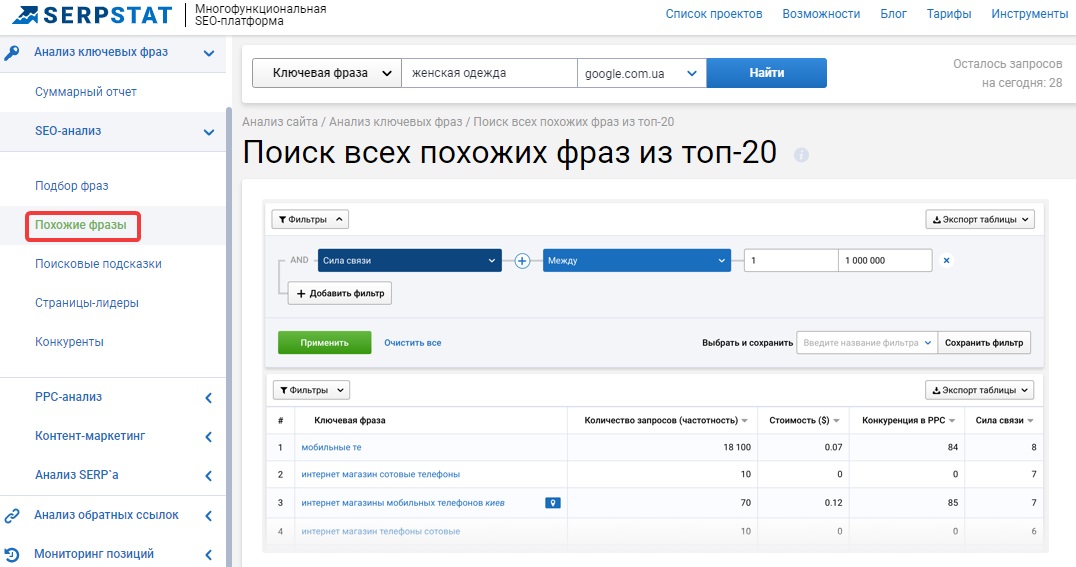
The service is almost as popular among internet marketers as the previous one. There is a free plan with limited functionality and several paid ones with additional features and benefits.
In the free package, the tool produces only 10 similar keywords for a keyword or site.
Advantages of the tool:
- The service is suitable for both SEO-specialists and contextologists (there are useful functions for both);
- You can analyze your competitors – what key phrases they show advertising for, how much money they spend on it and so on;
- Analyzing the site, Segrstat will identify missing keywords and expand semantics, which will help to connect the missed queries in the promotion.
Minuses of the service:
- Statistics are collected with a delay;
- Most of the useful options need to be paid for.
Key Collector application
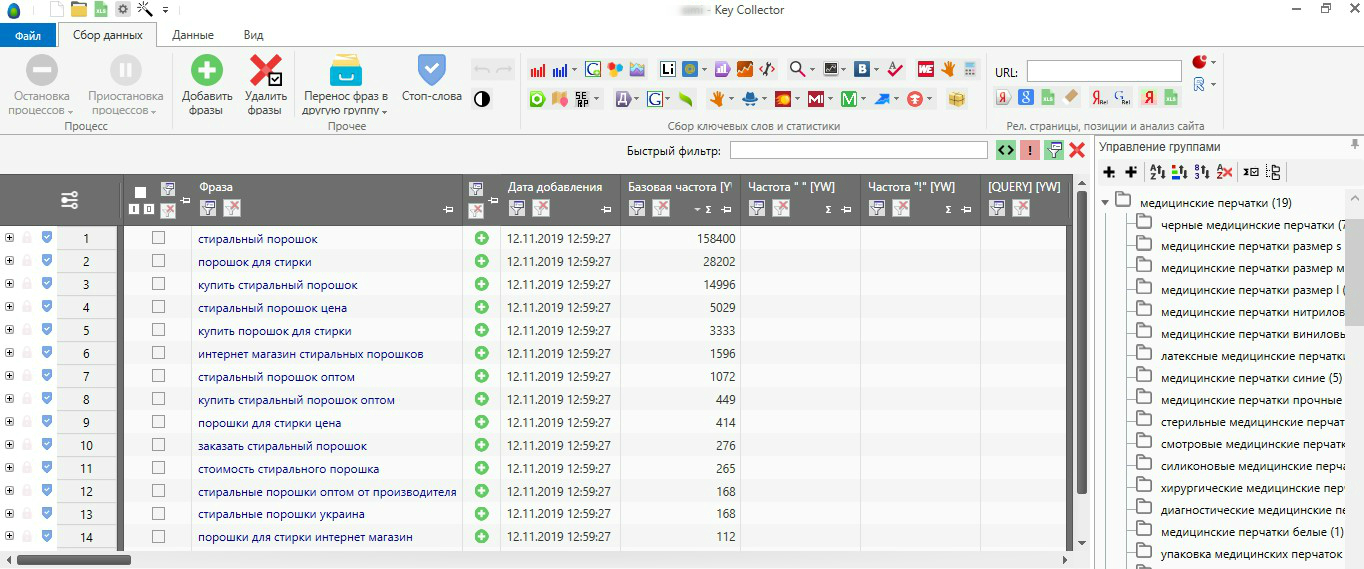
Another service for selecting keywords for contextual advertising is Key Collector. This is a highly specialized tool and it deals only with the semantic core.
Key Collector collects information from various sources: Yandex Metrica, Yandex.Direct service, Google Analytics, Adwords, search tips from both systems, Serpstat, Rookee, Rambler and many others. The tool is paid, but not expensive. You need to pay about $28 for a lifetime license. Key Collector will work even if you change your computer – you need to email the developers the configuration of the new PC and they will send you an updated license number.
To the pluses of the service can be attributed such:
- For collecting keywords, this is probably the most effective service today (it collects them from all possible sources);
- Uploads in the required format;
- Determines the click price and competition for each phrase;
- Selects a relevant page for all queries;
- Shows statistics to analyze seasonality;
- Performs a breakdown by city and region.
Minuses:
- The tool is paid, but the fee is one-time.
Keyword Tool service
If you are selecting keywords not only for Google Ads, but also for other services where you can place contextual ads, try using the keywordtool.io service. It allows you to collect search hints from Google, YouTube, Bing, Amazon and many other services and social networks:

These search hints are generated based on the autocomplete search string when the user starts typing a query into the search engine:
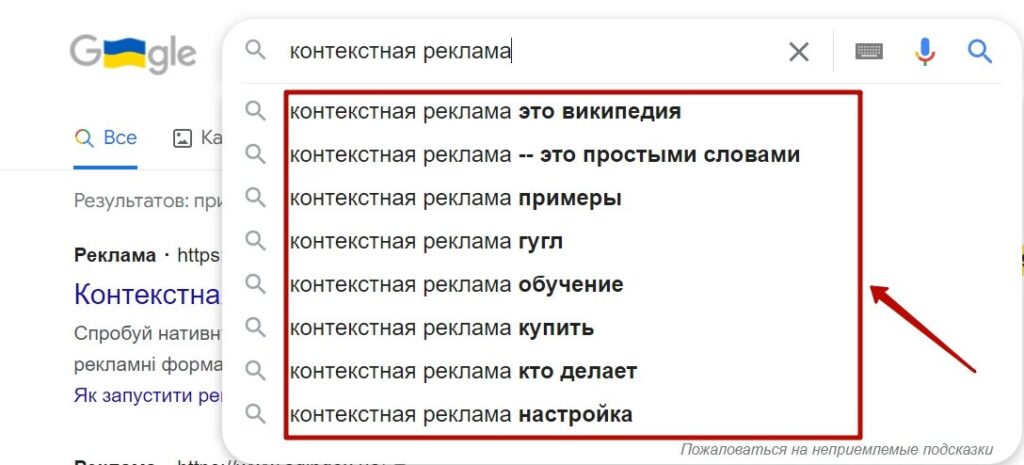
How many calls and sales will I get by ordering contextual advertising from you?
I need to calculate the conversion of my website Describe
the task
in the application
Calculate potential ad revenue Google
contextual advertising calculator
In the free plan you can search for keywords from the search hints, mark the necessary ones from the list and copy them or download them as an Excel spreadsheet:
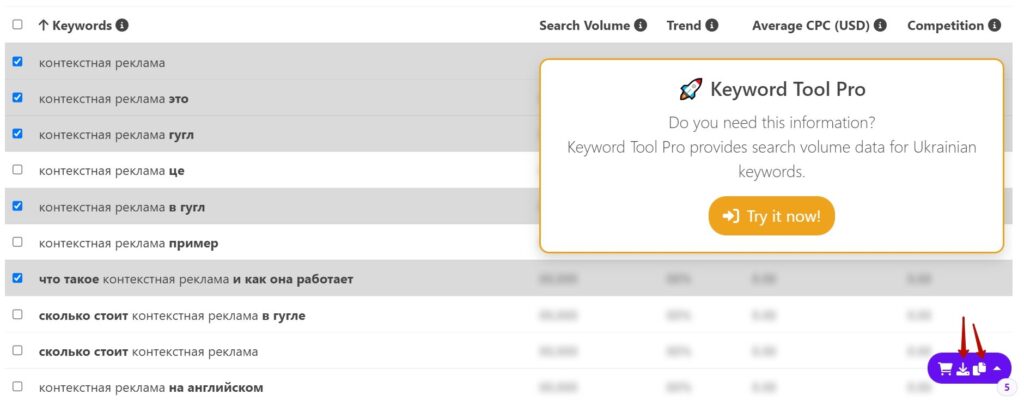
If you go to the settings, you can filter the received search phrases or set minus words for which the system will not display results:
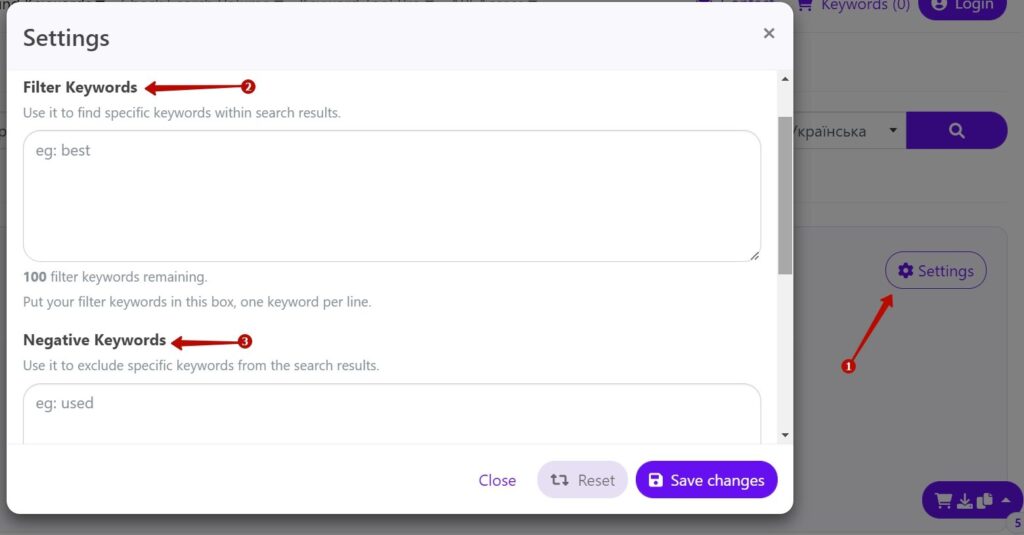
In the paid tariff you additionally receive data on frequency, cost per click and competition, which allows you to immediately screen out “zero queries” or those for which the auction in Google Ads is overheated:
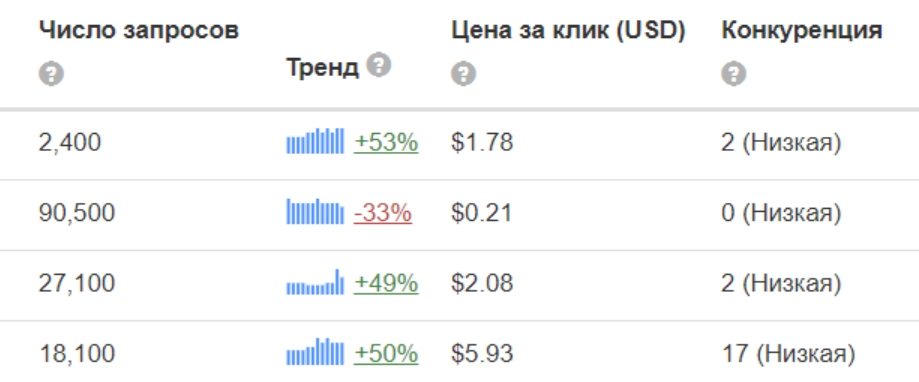
Pros of the tool:
- There is the ability to collect semantics from Ebay, Instagram, Twitter (in addition to Google);
- A free version with impressive functionality is available;
- There is a convenient extension for Google Chrome;
- You can customize the language of the user interface and search region;
- Convenient filtering of results, ability to set minus words;
- Shows competition and CPC by keyword.
Disadvantages:
- The paid version is expensive – plans start at $69 per month (assuming you pay for a year at once).
Google Trends
This is a free tool from Google that allows you to analyze the popularity of search queries in real time. With Google Trends, you can find out which keywords are currently popular and searched for by users. This helps to identify the most relevant and in-demand queries for contextual advertising.

The service also shows how the popularity of queries changes over time. This allows you to select keywords that are relevant for a particular period, such as seasonal or related to a significant event. In addition, the tool produces related queries and keyword ideas.
KWFinder
This is a popular keyword generation and analysis service that allows you to quickly expand your semantic core based on entered queries or landing page URLs.
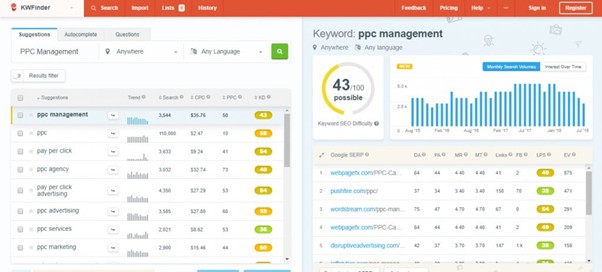
KWFinder can also automatically suggest similar queries using artificial intelligence algorithms. In addition, KWFinder helps analyze seasonality, regionality and other keyword parameters.
The tool also provides up-to-date statistics – frequency and keyword competition among advertisers. This data allows you to intelligently plan the budget and rates for an advertising campaign.
KWFinder can be used for free to access basic features, but for full-fledged work you will have to switch to one of the paid plans, which start at $39 per month.
Ubersuggest
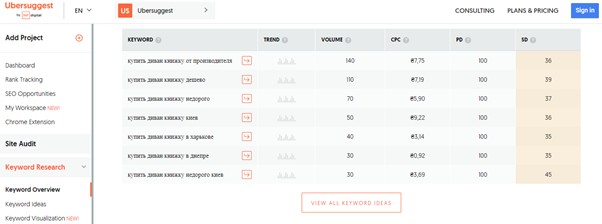
A popular free tool for generating and analyzing keywords, which was developed by famous SEO specialist Neil Patel. The main advantage of Ubersuggest is the ability to quickly build a semantic core based on marker queries or by site URL (you can specify your competitor as well).
The tool uses search engine data and shows hundreds of variants of queries relevant to the entered keyword or site topic. It also allows you to view statistics on the entered keywords – the volume of traffic, the level of competition and monthly dynamics of popularity.
SERanking
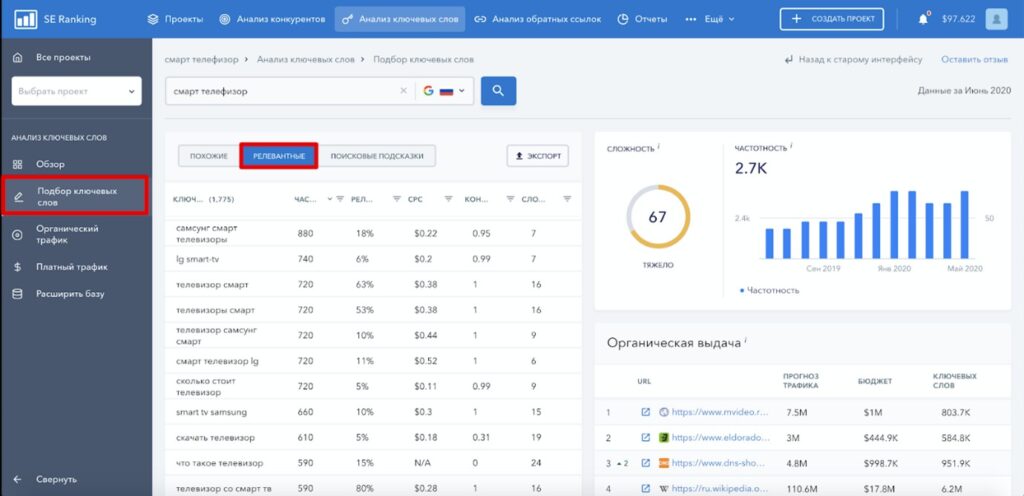
The service allows you to analyze your competitors and find out what ads they show in search results and for what keywords, what approximate budget they spend on it and what traffic they collect.
You can also connect Google Analytics to unload your keys from it and get recommendations on how to expand your semantic core based on them.
The tool is paid, but the price is affordable even for businesses with small budgets and private PPC-specialists. A flexible system of tariff plans allows you to choose an option for a variety of tasks.
Ahrefs service
Ahrefs is one of the most powerful tools for search engine promotion and search engine advertising specialists. It has the most complete keyword database on the market, which means you can enter your competitors’ sites and get a full offload of relevant queries for your business that can be used for search advertising.
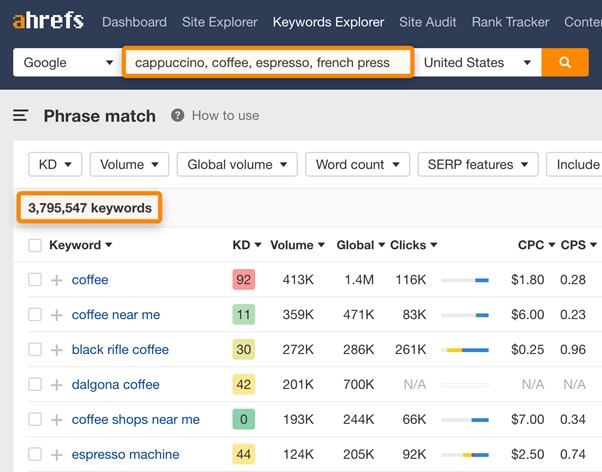
The system shows any data, from the frequency of each keyword, to the level of competition in SEO and PPC, estimated cost per click, seasonality and search trends. The only disadvantage of Ahrefs is its high prices, which start at $99 and limited data upload limits in each tariff.
Semrush platform
Semrush is Ahrefs’ main competitor in the battle for internet marketers’ attention. Its database of key phrases is almost as impressive, while the tariff plans are generally cheaper. It also has a free trial period.
It also allows you to collect semantics based on competitors and has its own system for grading the complexity (competitiveness) of each query. The service shows the frequency of keys, estimated traffic, as well as the price per click.
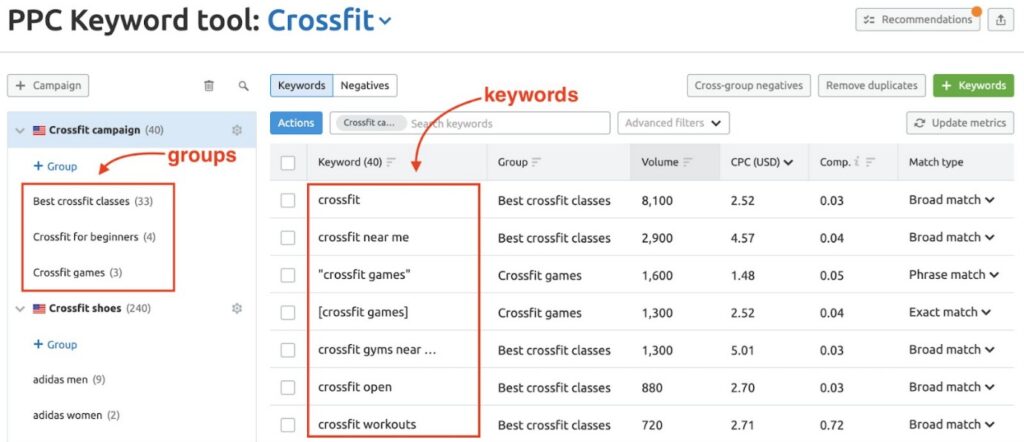
Additional ways to collect semantics
- Brainstorming. You need to formulate a question for yourself – “what query would I ask to find this product or service?”. Put yourself in the shoes of a potential customer. Ask employees, friends, relatives – how they would search, it can significantly expand the semantic core;
- Search hints. When you start typing a keyword into the search bar – Google offers several endings. Use them in campaign customization – their base is formed based on the intent of potential buyers. Hints can be collected by Key Collector or you can do it manually:

- Related queries. Another way of selecting keywords is to analyze the queries suggested by Google under the search box on the first page. These keywords, according to the search engine, are relevant to your query. You can often find something useful among them:

Why is it important to clean the semantic core after collecting queries?
After selecting keywords through Key Collector or SemRush, the final list will definitely include phrases that are only partially related to the desired subject matter and will not be suitable for a commercial site. For example, for an online store that sells only branded products Apple, irrelevant will be irrelevant queries “buy phone boo” or “Chinese smartphones inexpensive”. Showing ads for them will only lead to useless clicks and wasted budget.
The same goes for phrases that are not suitable for describing a particular business. Let’s say you don’t repair appliances or sell accessories. So, the keys “iPhone repair” or “iPad Mini 7 case” are not suitable. Their presence in the semantic core will only harm and will not give conversions.
Automated keyword tools can add words with mistakes, typos, incorrect wording or incomplete duplicates to the final list. All of this will clog the semantic core and interfere with the focus on transactional queries. Therefore, such “trash” phrases should also be identified and removed.
Finally, in the process of cleaning it is important to remove from the selected semantics all geographical references (cities, regions, countries) that do not cover your business. For example, if you deliver goods only in Kyiv and the region, there is no reason to spend money on clicks in Lviv or Zaporizhzhya.

